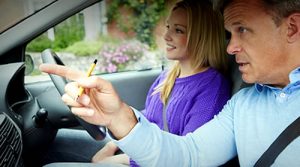Before the task of learning to drive, one of the decisions many individuals must make is whether to take automatic or manual driving lessons. From July 2016 to July 2017, there were around 1,730,936 driving tests conducted. Of those, 141,264 were conducted in an automatic car.
If you’re not entirely sure of which one does what, see a simple explanation of the differences between manual and automatic cars.
‘Transmission’ is essentially the gear system within the car and you can learn to drive in a car with automatic or manual transmission. Though it is entirely your choice, there are potential benefits and disadvantages to both – all of which are covered here. So if you’re not entirely sure which vehicle type to choose, perhaps this guide will make your decision a little easier.
Your Licence
In the UK, if you pass the driving test in an automatic car, you are restricted to vehicles of automatic transmission and cannot drive a manual. If you want to, you’ll need to retake and pass the driving test in a manual vehicle. If you pass in a manual however, you can legally drive both. Most of us don’t want to be taking driving lessons and tests a second time round, so think carefully in terms of your future.
A few years ago, automatics were clunky, slow, heavy, less economical compared to their manual versions and more expensive. Things have come a long way since then and automatics are lighter, often more economical than their manual version and generally much more pleasant to drive than they once were. Automatics are becoming much more popular, but are generally still more expensive to purchase than the manual equivalent.

Though it’s much less of an issue these days, if you have an automatic licence, you’ll need to ensure that if you ever need to hire a car, borrow one or require a courtesy car, then it’ll need to be automatic. Garages or car hire centres will typically have far less automatic models to offer.
Purchasing your First Car
If you have a full manual licence, your choice, theoretically is of any car at any price range. Not so for automatics. Their higher new purchase price also reflects second hand value. Whilst growing in popularity but still remaining a less popular choice than manuals, you’ll have around one quarter of the choice of vehicles to choose from, with the rest being manuals. Add to that, if you’re really on a budget, it further restricts your choices based on automatics commanding a higher used purchase price.
Then There’s the Insurance
Insurance is always a huge financial hit for new young drivers and insuring an automatic doesn’t help matters. Automatics cost more to purchase, therefore will cost the insurer more in the event of a write-off claim. They’re also more complex than manuals, which results in higher repair costs. Essentially you could be looking at around 10% more to insure an automatic compared to the equivalent manual version. See first time car insurance tips for advice on keeping insurance premiums as low as possible.
Driving Lessons
If you opt for driving lessons in a manual car, you’ll need to learn clutch control and gear changing. Unless you’ve tried it, it’s impossible to know how you’ll get on, but most learners find it a challenge initially, but begin to make steady progress after a few lessons. The benefits of automatics is that there’s no clutch and gears to worry about.
And the Cost?
Automatic lessons tend to cost a few pounds more than manual, though you save time due to not having to learn clutch control and gear changing. Saving time equates to fewer lessons, so essentially the higher hourly rate for automatics will result in a similar overall cost as manual lessons due to fewer hours required.
So to answer the question….
Automatic or Manual Driving Lessons?
- If you haven’t yet driven a car, opt for manual driving lessons. Even if you find the endless gear changing tedious, once you’ve passed you can always drive an automatic. The benefit here though is that you can always use a manual car if there’s ever a need to.
- If time is an issue and you need a driving licence as quickly as possible, then choosing automatic lessons will likely get you there quicker.
- Then there’s the learners who simply cannot get the hang of that clutch and endlessly stall the car. Whether you persevere with it is up to you, but personally I’d recommend ditching the manual and switching to automatic lessons – it’s easier and far less stressful. You might meet one or two minor setbacks with a lifetime ownership of an automatic licence, but nothing that can’t be solved.

Hello. Is it ok to learn in both a manual and automatic car or does this get confusing?
Hi Susan,
It depends on yourself. Providing that there’s no conflict between the automatic or manual while you’re learning and you’re not getting confused, then the additional driving experience would be worth it. But if you do find you’re getting a little confused, then stick to just the one transmission – see how it goes.
All I would say, is that if you do learn in both automatic and manual, is that when you are driving the automatic, it’s important to make sure you do not use your left foot for anything. The last thing you want to do is stomp on the brake out of habit confusing it with the clutch. That is a possibility and obviously quite dangerous. If you feel there’s a risk of that, then stick to the one transmission only.